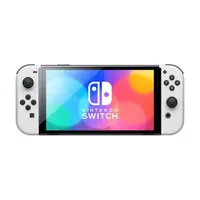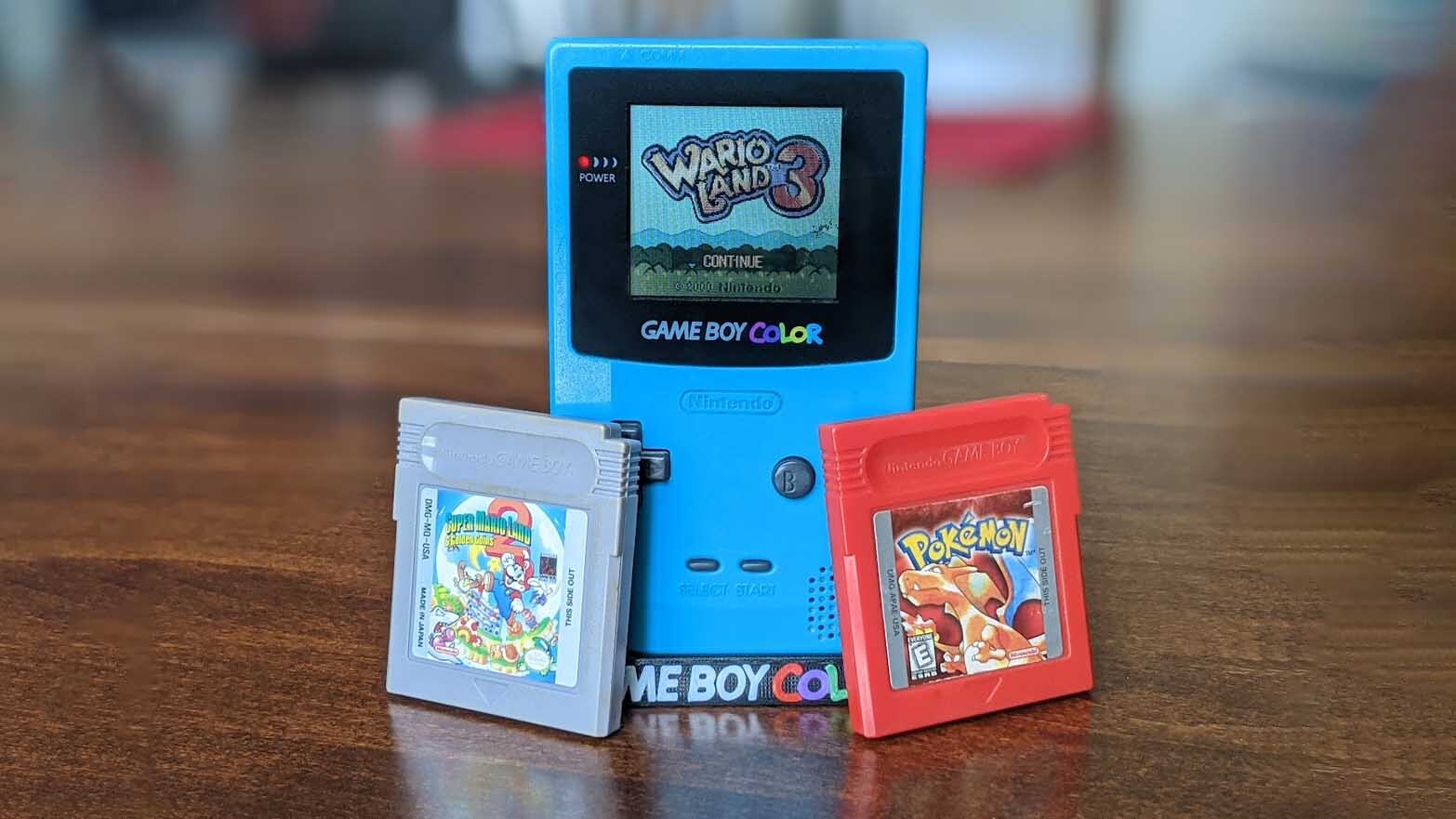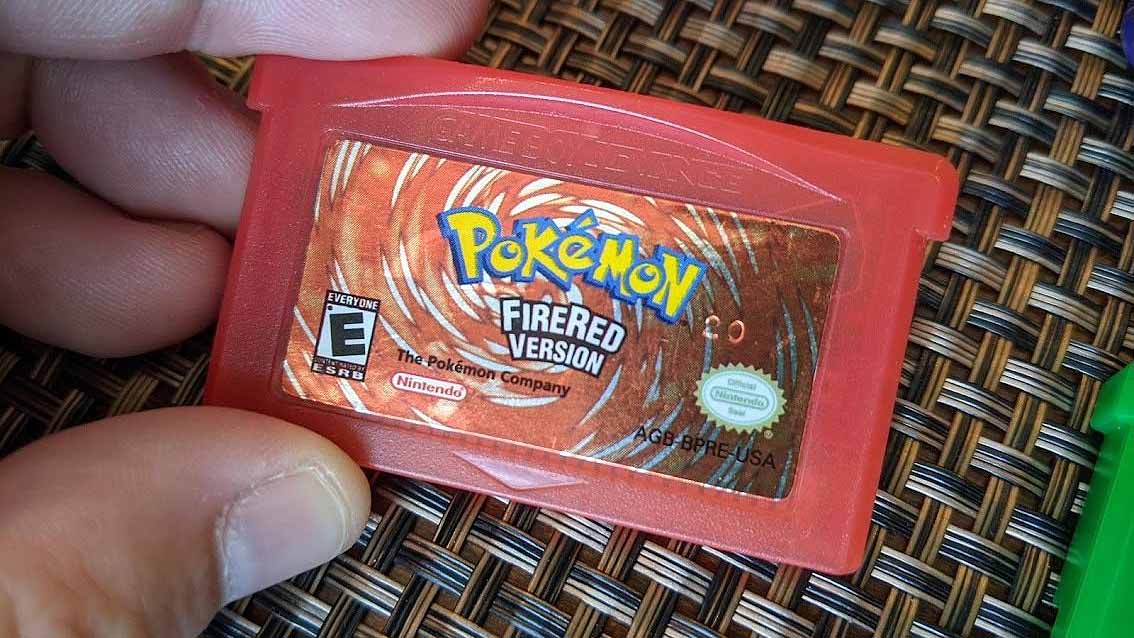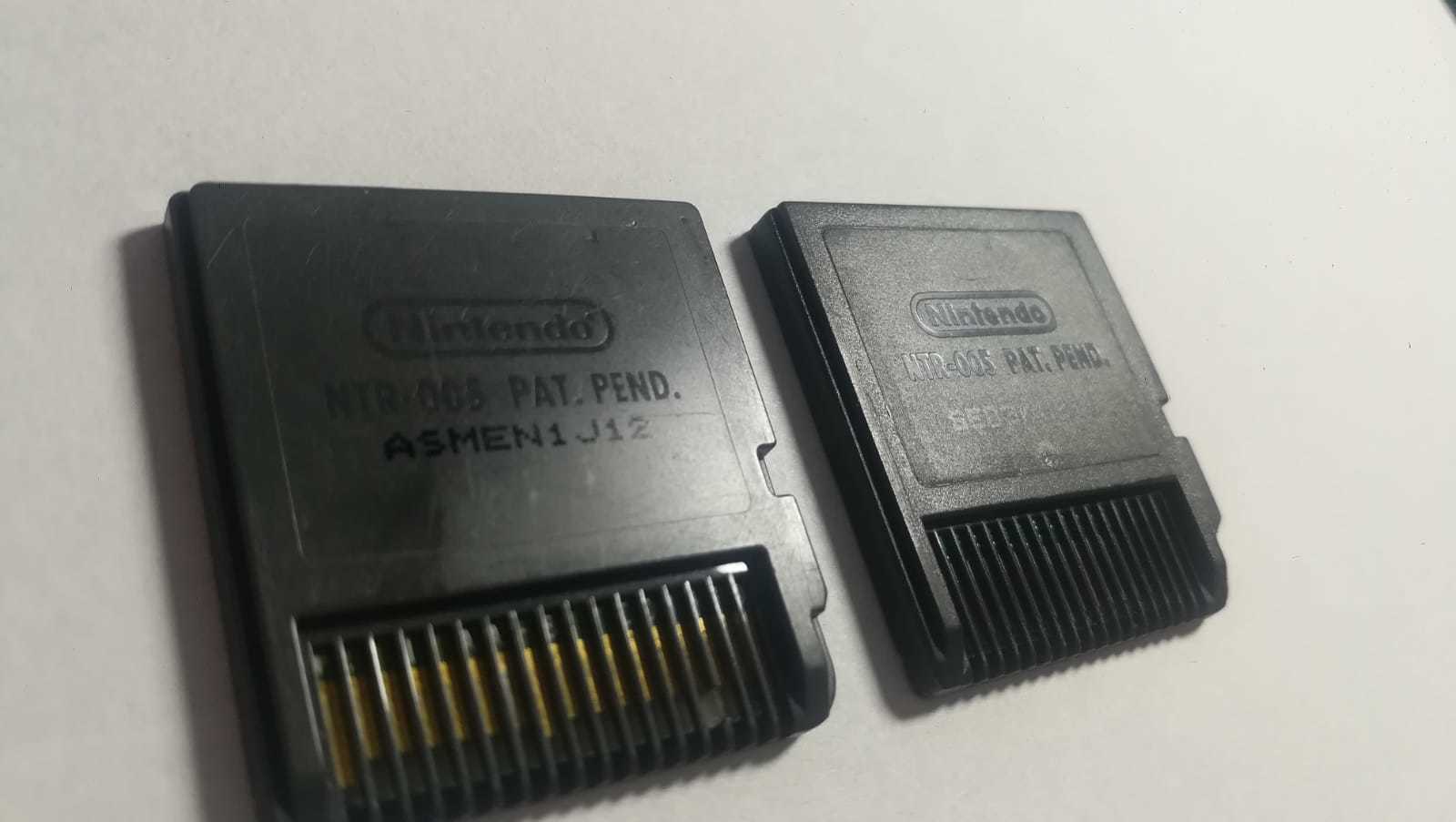The ultimate guide to spotting fake Pokémon games: Game Boy, Advance, DS, and more
Don't get scammed into purchasing a knockoff at an authentic cartridge's pricing.
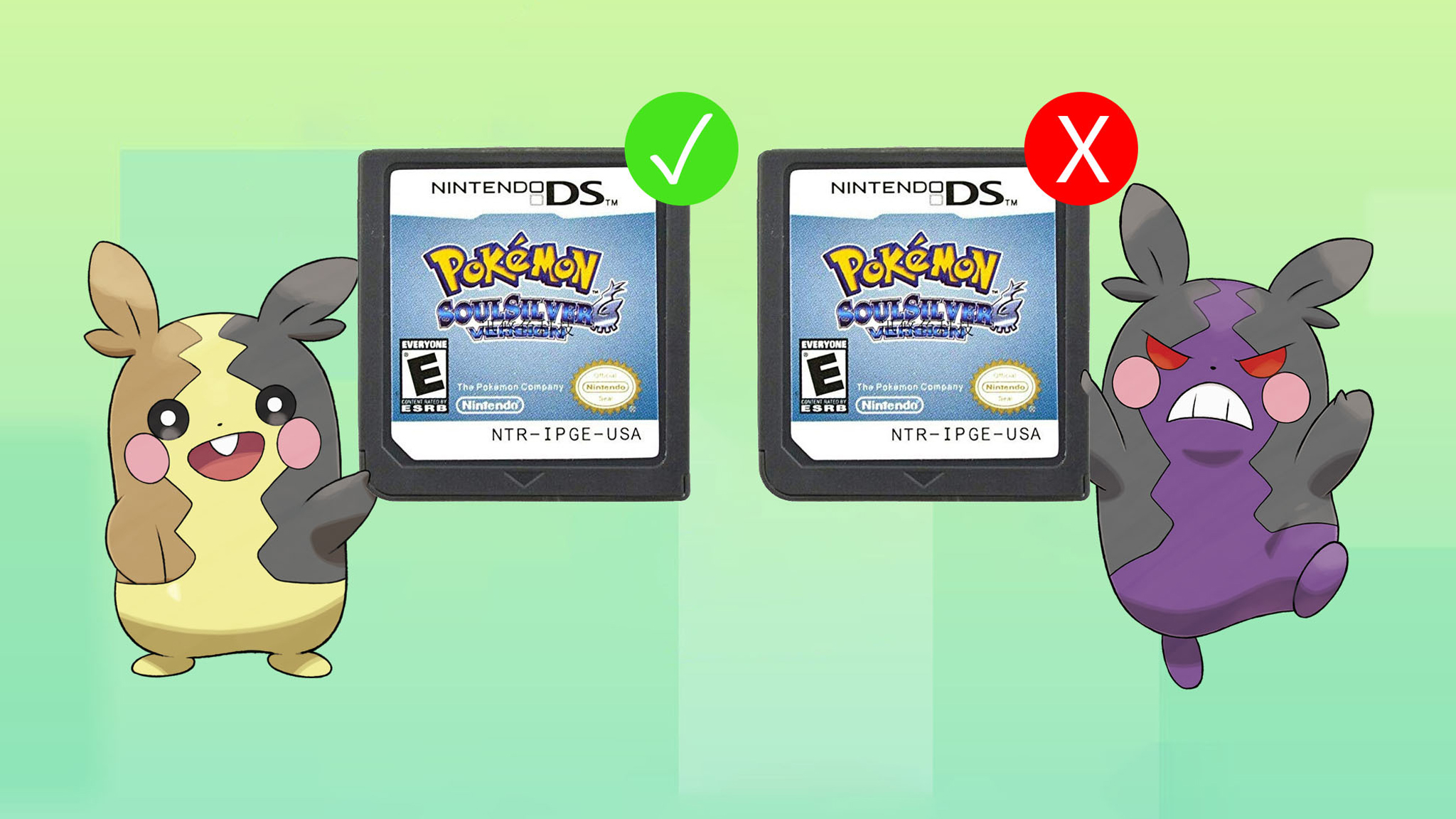
With many Pokémon games being remade for the Nintendo Switch, a lot of people, including me, are looking back to previous eras of Pokémon games. Some people will argue that previous Pokémon games are some of the best video games ever released. From the popular Kanto region in Pokémon Red, Blue, and Yellow, to the initially misunderstood but now revered Black and White, as well as their sequels, Black 2 and White 2 — Pokémon games are always in demand.
However, this, unfortunately, means that a lot of people want to take advantage of that popularity and demand by creating and selling reproduction cartridges, unbeknownst to buyers. It's easy to fall prey to these scams.
I ended up not doing my due diligence when purchasing a second-hand copy of Pokémon Platinum and ended up with a bootleg copy while being charged the price of the authentic cartridge. This deceit occurs most with Pokémon games, despite being some of the best-selling games on the console.
Take note: Some cartridges shown in this article will be fake while others are authentic. We've labeled them each time to let you know if they are real or not. Be sure to pay attention to how fakes differ from genuine copies.
Things you'll need
Do you want to play the newest Pokémon games without the hassle of worrying about cartridge authenticity? Pick up a Nintendo Switch and the latest Pokémon game today!
Nintendo Switch OLED $337 at Amazon
The best screen Nintendo has to offer will make your Pokémon games look better than ever before. With a growing library to choose from, there's Pokémon Scarlet and Violet as well as Legends: Arceus.
Pokémon Scarlet $44 at Amazon
The latest game in the mainline Pokémon series with an open world for navigation and loads of exciting areas to explore. Get ready to explore the Paldea region.
Things to note about spotting fake Pokémon games
Pokémon games exist on all Nintendo handheld consoles from the original Game Boy to the Nintendo 3DS and the Nintendo Switch, so we'll have a section dedicated to Game Boy, Game Boy Advance, and Nintendo DS games.
Fake Game Boy and Nintendo DS games do exist in abundance. However, fake Nintendo 3DS and Nintendo Switch games are far less common. The Game Boy, Game Boy Advance, and Nintendo DS have sold millions of units, and during the time since its release, gamers have worked tirelessly to expose fake games and inform each other.
iMore offers spot-on advice and guidance from our team of experts, with decades of Apple device experience to lean on. Learn more with iMore!
The Game Boy, Game Boy Advance, and Nintendo DS saw 20 entries in the Pokémon series:
| Game | System | Units sold |
|---|---|---|
| Pokémon Red and Blue | Game Boy | 31.37 million |
| Pokémon Yellow | Game Boy | 14.64 million |
| Pokémon Gold and Silver | Game Boy Color | 23.10 million |
| Pokémon Crystal | Game Boy Color | 6.39 million |
| Pokémon Ruby and Sapphire | Game Boy Advance | 16.22 million |
| Pokémon FireRed and LeafGreen | Game Boy Advance | 12.00 million |
| Pokémon Emerald | Game Boy Advance | 6.32 million |
| Pokémon Diamond and Pearl | Nintendo DS | 17.67 million |
| Pokémon Platinum | Nintendo DS | 7.06 million |
| Pokémon HeartGold and Soulsilver | Nintendo DS | 12.72 million |
| Pokémon Black and White | Nintendo DS | 15.64 million |
| Pokémon Black 2 and White 2 | Nintendo DS | 7.63 million |
Fake Pokémon games: Game Boy and Game Boy Color
The Game Boy is where it all began, way back in 1996 with Pokémon Red and Green in Japan, and in 1998 with Pokémon Red and Blue in the United States. Fake Game Boy games are relatively easy to identify, so you shouldn't have any issue knowing your way around.
Special tools to open: While it's not too difficult to identify fake Game Boy and Game Boy Color games based on outward appearance alone, it's always best to have a handful of tools with which you can open up games. You can find special tool kits online that offer security 3.8mm Gamebit screwdrivers, which are needed to open Game Boy cartridges.
Cartridge color and embossed text
Check sticker image, spelling, and trademarks: Look around at the sticker and any text on the cartridge to make sure they match up with what the authentic cartridge looks like. It's not uncommon for a fake cartridge to have mostly similar text but with a letter or two that aren't correct. The Nintendo logo should have a trademark symbol on the far right. if It's missing, the cartridge is fake.
Beware the grey cartridge: If you see a North American or European Pokémon game in a gray cartridge, run away. Nintendo has never produced any Pokémon title on the Game Boy or Game Boy Color in a gray shell. Each game's cartridge color corresponds with its name — Pokémon Red, Blue, and Yellow have red, blue, and yellow cartridges. Pokémon Gold, Silver, and Crystal have golden, silver, and icy blue cartridges. In Japan, Pokémon Red, Blue, Yellow, Gold, and Silver games were produced in gray cartridges, with Gold having a darker cartridge than the others. If you see a gray cartridge with a sticker showing any language other than Japanese, it's not authentic.
Look for thumb grip and embossed text: There's a concave thumb grip at the top of every Game Boy game with text that reads "Nintendo GAME BOY™". Meanwhile, Game Boy Color games have a convex thumb grip that reads "Game Boy COLOR". Fake games often don't have this text or may just say something like "GAME." Make sure you check for this text, as it's one of the easier ways to tell a dud from the real deal.
Battery and circuit board
Check the battery: The battery size of each Game Boy and Game Boy Color Pokémon game will be etched on the board itself. Pokémon Red, Blue, Gold, Silver, and Crystal use a CR2025 battery, while Pokémon Yellow uses a CR1616 battery. Their batteries are not encased in any metal cage, so stay away from those. You will need a special Gamebit screwdriver in order to open the cartridge.
It's possible a previous owner replaced the battery: Because these games are out of production, there is a chance that you may be purchasing a copy from someone who replaced the battery (which is ok if it was done correctly). It's therefore recommended to check all of the boxes if the battery looks like it's third-party — your buyer may have just replaced it. If this seems to be the case, check around for other clues to prove the cartridge's authenticity.
Beware messy soldering or glue: Game Boy games that Nintendo manufactured will never have any black soldering goop on them. If you open a Pokémon game and are greeted by a big black blob, it's a reproduction copy. There are online databases that feature both the exterior and circuit board of all Pokémon games from Red to Crystal, so if you're buying one online or in person, keep an image of the circuit board handy to compare.
Fake Pokémon games: Game Boy Advance
Starting in 2002 in Japan and 2003 in the rest of the world, Pokémon Ruby and Sapphire made their Game Boy Advance debut, with the first remakes in the series, Pokémon FireRed and Leaf Green following shortly after. At the end of the Game Boy Advance's life, the definitive version of the Hoenn region was released: Pokémon Emerald.
Have the right tool for the job: Game Boy Advance cartridges can be opened with a 1.5mm tri-wing screwdriver.
Cartridge color and embossed text
Know what the cartridge should look like: Just like the Game Boy and Game Boy Color titles, Pokémon games on the Game Boy Advance have a distinct look and feel. Pokémon Ruby, Sapphire, and Emerald sport a deep, translucent red, blue, and green, while Pokémon FireRed and LeafGreen have bright red and green cartridges that are more opaque.
Check for thumb grip and embossed text: Game Boy Advance cartridges feature a smaller thumb tab on the front, with "GAME BOY ADVANCE" in bold letters just underneath it. On the back of each cartridge are two screws bordering a rectangle with the Nintendo logo, AGB-002 model number, and "PAT. PEND. MADE IN JAPAN."
Check spelling and trademark symbols: Ensure that none of the text on the cartridge is misspelled before buying. It's common for fake cartridges to look mostly correct with a slightly different spelling somewhere. Anywhere "Nintendo" is shown there should be a trademark symbol next to it. If it's not there, the cartridge is fake.
Look for stamped numbers on front: Unique to Game Boy Advance cartridges is the presence of some numbers that are "stamped in" on the right side of the sticker. These numbers are featured on every Game Boy Advance cartridge and can survive some wear. As long as the sticker is intact on whatever product you're buying, it's more than likely to be legitimate. Of course, there are manufacturing differences in every batch of games produced, so if your copy doesn't have the embossed letters on the sticker, keep calm and look out for any other signs before ruling it a fake.
Battery and circuit board
Know which ones should or shouldn't have batteries: The batteries in Ruby, Sapphire, and Emerald will not be kept in a cage but may have a yellow or blue ring around them. FireRed and LeafGreen, on the other hand, do NOT have a battery, as there are no time-based events in the game.
Remember a battery might have been replaced: Because these games are old and out of production, there is a chance that you may be purchasing a copy from someone who replaced the battery (which is ok if it was done correctly). It's therefore recommended to check all of the other boxes to see if the cartridge is authentic. If the battery looks like it's third-party — your buyer may have just replaced it to allow the game to still work.



Check for authentic serial numbers on the circuit board: Each cartridge also has a series of numbers and letters just above the pins on the board. While different batches of cartridges may have different model numbers, as a general rule of thumb, Ruby, Sapphire, and Emerald will have the model number AGB-E05-01. FireRed and LeafGreen will read AGB-E02-20 or AGB-E02-30. These are all printed in white text in a specific font and can be seen even if you don't have a tri-wing screwdriver if you tilt the cartridge.
Look for the four golden rectangles on the backside of the circuit board: While not completely fail-proof, a means of authenticating your game is by finding the golden rectangle on the circuit board, located on the upper-left corner of the back of the cartridge. This rectangle is made up of four smaller rectangles, with each smaller rectangle having one to three dots on them. This can be seen on any GBA Pokémon game without opening the cartridge. If you're in doubt, check for this rectangle. It is possible for counterfeiters to replicate this design, but if it's not there, you'll know right away that the cartridge is fake.
How to know if you've been duped
If you've come across a GBA Pokémon game at a flea market and are unsure if it's legitimate or not, there are two simple ways to test for authenticity:
1. The text before the save-select screen
Place your game in your GameBoy Advance or Nintendo DS Lite. Upon booting up the game, a fake GBA Pokémon game will simply read, "The previous save file will be loaded. The game can be played." before the save-select screen appears. Authentic games will not show that message, but simply direct you to the save select screen.
An authentic copy of Ruby, Sapphire, or Emerald with a dry battery will display the message, "The internal battery has run dry. The game can be played. However, time-based events will no longer occur." Your game is fine; the battery just needs replacing to complete specific tasks that require a day-night cycle to be running.
2. Compatibility with Generation 4 games
If you own an original Nintendo DS or DS Lite and an authentic copy of Pokémon Diamond, Pearl, Platinum, HeartGold, or SoulSilver, you can test whether your GBA Pokémon game is authentic. Simply place both games into your DS or DS Lite and boot up the DS title. There will be a "Migrate from (Ruby, Sapphire, Emerald, FireRed, LeafGreen)" option on the save select screen as long as a GBA Pokémon game is inserted. Fake GBA Pokémon games will not trigger this menu option.
Remember: For the migration option to be available in Pokémon Diamond, Pearl, and Platinum, players must have seen (not caught) all 150 Pokémon in the Sinnoh Dex — excluding Manaphy — and talk to Professor Rowan to obtain the National Dex. In HeartGold and SoulSilver, players must have defeated the Elite Four, entered the Hall of Fame, and obtained the National Dex before they're able to migrate Pokémon from the GBA Pokémon games.
Fake Pokémon games: Nintendo DS
The Pokémon games available on DS are Pokémon Diamond, Pearl, Platinum, HeartGold, SoulSilver, Black, White, Black 2, and White 2. These games, especially the generation 4 games, are arguably the most-faked Pokémon games on the market. HeartGold and SoulSilver specifically have drastically increased in value on the secondhand market. So while you may want a deal, it's also important to be safe. These games have many tells, so there are quite a few things to keep an eye out for.
1. The ESRB rating and Nintendo Seal of Quality
If you're purchasing Pokémon games for the Nintendo DS, you should know that you aren't limited to games from your region. Nintendo DS games from Europe and Australia (PAL) will work on systems from the North America (NTSC-U) and Japan (NTSC-J) regions. However, the language cannot be changed in most games, so make sure you can speak the language of whatever game you've bought.
If you're purchasing an out-of-region game, you may notice that the stickers look different. Pictured here are my (extremely beat up) NTSC-U copy of Pokémon HeartGold alongside my fairly new PAL copy of HeartGold. Both games are genuine, but they both sport very different-looking stickers.
Here's what you can look for in North American and European/Australian games:
| NTSC-U games | PAL games |
|---|---|
| ESRB rating in the bottom left-hand corner | CE marking in the bottom right-hand corner |
| Oval-shaped "Official Nintendo Seal" in the bottom right-hand corner | Round "Official Nintendo Seal of Quality" in the bottom left-hand corner |
| "The Pokémon Company" placed above the official Nintendo logo | "The Pokémon Company" placed below the official Nintendo logo |
The differences are subtle, but there nonetheless. In addition, games have a different three-digit code in the bottom right-hand corner of the sticker. North American games display "USA", European and Australian games show "EUR", and Japanese games feature "JPN". If you see a game with a North American code that doesn't have an ESRB rating, the game is fake.
2. The game's unique code
As previously mentioned, every Nintendo DS game has a 10-digit code at the bottom of the cartridge's sticker. The code can be broken down as follows:
- System code — The first three digits display the letters NTR. This stands for "Nitro," a code name for the Nintendo DS during its development. Every game features these letters at the beginning of the code.
- Game code — Every game has a four-digit, game-specific code relative to their region. As can be seen above, Pokémon HeartGold has a game code of IPKE in North America and IPKP in Europe and Australia. Keep in mind your game's region when buying, and compare the game code to other cartridges being sold online.
- Region code — Make sure the region code corroborates the game code. USA for North America, EUR for Europe/Australia, and JPN for Japan. A genuine North American copy of Pokémon HeartGold should always have the code NTR-IPKE-USA at the bottom of the sticker.
3. The code on the back
Does the sticker look legitimate? Great! Now, look at the back of the cartridge. Remember that game code we spoke about earlier? If your game is legitimate, it will ALWAYS match the serial code on the back of the cartridge. The serial code is found below the embossed text, and the first four digits will always be the same as the game code at the bottom of the sticker on the front.
However, we know that you may be purchasing a second-hand copy of the game, so don't worry if that code is rubbed off! That may just mean that the game was well-loved.
4. The embossed text and trademarks
If the code on the back of the cartridge is missing, the embossed text should give you some insight into the game's legitimacy. This text looks "pressed into" the cartridge, but ever so slightly. Due to cheap production, reproduction copies usually have embossed text that is pressed in way too deep. Have a look at the above cartridges. If you look closely, the fake cartridge on the right (my bootleg copy of Pokémon Platinum) does not feature the registered trademark symbol in the upper right-hand corner of the "Nintendo" logo. These inconsistencies can give a reproduction cart away.
Beware of the text itself, as well. All Pokémon Diamond, Pearl, and Platinum games, as well as every other grey-cartridge Nintendo DS game, will feature the text NTR-005 PAT. PEND. However, all Pokémon games that have infrared (IR) functionality — those being Pokémon HeartGold, SoulSilver, Black, White, Black 2, and White 2 — will feature the text NTR-031 PAT. PEND.. Keep this in mind when you're looking for an IR-functionality Pokémon game to avoid being deceived.
5. The circuit board and pins
Have a look at the game's circuit board. At the topmost part of the visible area of the board's backside, you can see some white numbers and letters that can vary from game to game. Notice how the left game in this picture shows numbers, but the right one doesn't. The contact pins of genuine games are a golden color as well, while reproduction cartridges' contact pins are often made of a cheaper tin, which can wear out more quickly. Given that the contact pins allow your system to read the game, you always want to have the best quality to ensure longevity.
6. The cartridge's top indent


This is arguably the fool-proof means of determining whether a Nintendo DS cartridge is fake. Have a look at the top part of the cartridge, which peeks out once you've inserted it into your system. The molds which make genuine Nintendo DS games are formed in such a way that there will always be a rectangular indent of varying length and width at the top of the cartridge. Have a look at the two above images. On the left, we have a regular grey Nintendo DS cartridge with an indent, revealing its authenticity. The following picture features a reproduction cart, which is completely smooth.
If you're purchasing a game in a brick-and-mortar store, you can always ask to inspect the cart. Any respectable seller understands how precarious these situations are and will show goodwill by allowing you to look over a product before buying it. Not all sellers on second-hand storefronts like eBay will post pictures of the top of the cart, but this is always good to keep in mind if you want to check for its authenticity upon arrival.
7. The color of the cart
As previously mentioned, the majority of Pokémon games on the Nintendo DS have IR functionality. Because these games rely on infrared light to communicate with technology like the Pokéwalker, their cartridges are made of a different material. Under normal conditions, these cartridges look black to the naked eye. Shine a bright light through them, though, and you'll see that the material is a dark reddish-purple in color.
Nintendo has never, ever produced a grey-cartridge version of the Generation 2 remakes or any of the Generation 5 games. Every IR-compatible Pokémon game has a reddish-purple cartridge. Pokémon HeartGold and SoulSilver are some of the most popular games in the franchise and can be quite expensive. If you're looking for one of those games and it's grey, stop. It's fake. Don't give your money to scammers unless you specifically wish to buy a reproduction copy. If you're fine with buying a reproduced copy, consider that these cartridges are not authorized by Nintendo and may not work as well as official copies do.
Fake Pokémon games: Things to look out for
Here are some things you should generally look out for when identifying whether your game is real or not. This more or less applies to any games on these systems, so feel free to apply this advice to whatever retro handheld game you're currently browsing for.
1. The seller
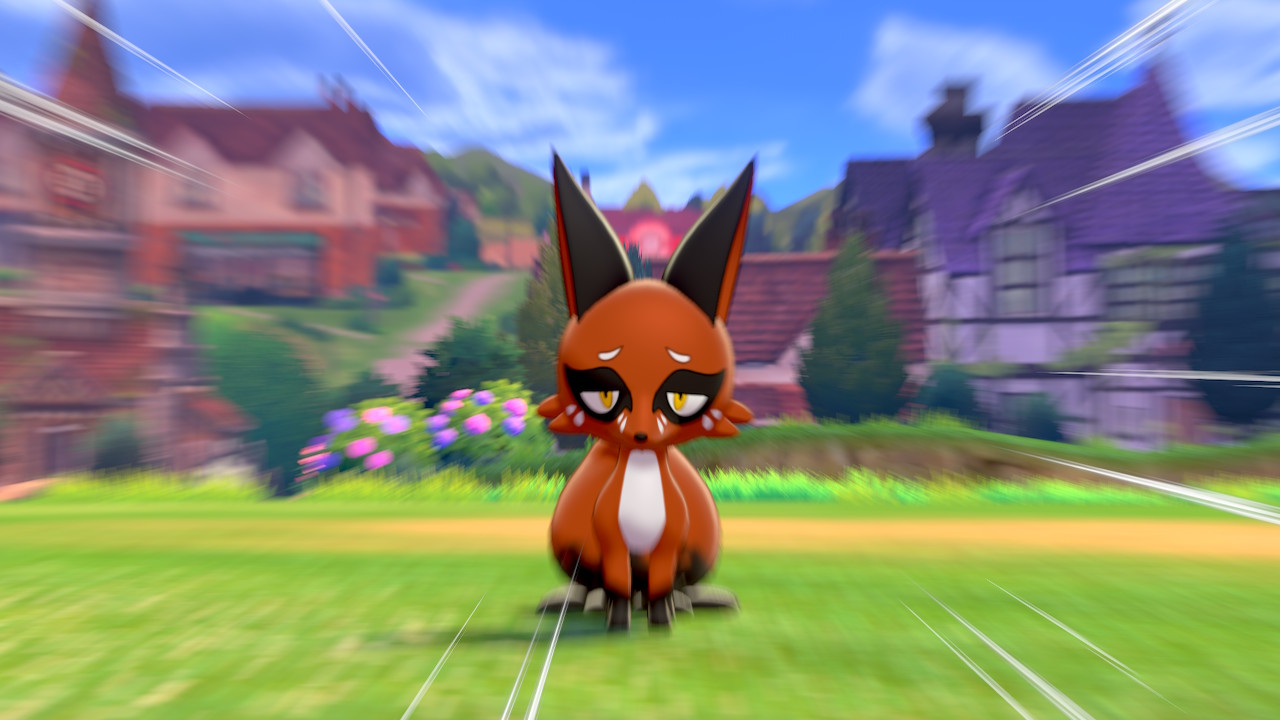
None of these games are in official production anymore, and as such, you'll always have to be wary of who you're buying them from. Now, reproduction copies and fakes pass through even the most seasoned of hands, so if you come across one from someone you trust, you don't necessarily need to assume they were trying to deliberately deceive you. What matters most is that no matter where you buy from, whether it's a brick and mortar store, GameStop, Amazon, eBay, or otherwise, don't automatically assume it's legitimate.
If a game being sold online is being shipped out of China, immediately assume it's a fake. Reproduction copies come from Chinese sellers in droves, and it's unlikely that legitimate American copies of Pokémon games were being sold at retail in China in the 1990s or 2000s.
If you're buying from secondhand platforms like eBay, make sure you find a seller who offers eBay's Money Back Guarantee. This also goes for any online platform you shop on. If you're purchasing from a brick-and-mortar store that sells retro games, ask if they do returns before purchasing. Any seller worth their salt will allow you to either return the game if you find out it's a reproduction copy or open it up in front of them to examine it. It's your money, so don't be shy to ask for reassurance! Just remember to be respectful at all times.
2. The listing and unique images of cartridges
Be wary of games that are way too cheap to be true unless you've been able to inspect the cart thoroughly. It's a tough toss-up — it may be a shady scammer, or it's a parent looking to sell their child's old things without looking into how much this is worth. You may see cheaper games at flea markets and garage sales, so people may be more hesitant to let you open it in front of them, but it doesn't hurt to ask.
Don't purchase games from any online sellers who only use stock images of the game's box art. Trustworthy sellers know how important reassurance is to potential buyers and will always show multiple images of their goods from various angles. If you can't see it, don't buy it.
3. Sticker vibrance and composition
When you first gaze upon your potential purchase, have a look at the game's sticker. Examine it and ask yourself a few questions before clicking on that buy button:
- Does the sticker seem short or malaligned?
- Are the white strips at the top and bottom of DS stickers unusually thick/thin?
- Are the GBA stickers shiny or sparkly enough?
- Are the colors vibrant?
- Is all of the text sharp?
- Are the fonts used similar to other games?
- Does the sticker look like other authentic DS games you've seen online?
- Are trademarks where they should be?
Because reproduction carts are, well, reproductions, it means that their imitations will never be perfect. Check the sticker for anything that seems off. If you've been collecting Pokémon games for some time, your tingly sticker senses should be firing off. Reproduction cart stickers, due to the low print quality, often feature blurry text and washed-out colors. If you're unable to read what's on the sticker, that's an indication of the cartridge's authenticity.
You're a Pokémon Master!
And... that's it! You are now an official Pokémon game detective. A Detective Pikachu, if you will. When purchasing items from sellers both online and in-person, remember to keep your wits about you and be on the lookout for any shady behavior. A reputable seller will always entertain your wishes to prove a game's authenticity before buying. Know your games, and look at some previously sold games online to have a feel for what an authentic copy looks like. Soon you'll be a Pokémon master in no time!

All the tools a retro Nintendo collector needs
If you're interested in collecting retro Nintendo systems from the Nintendo Entertainment System to the Nintendo Switch, this toolset is just what you're looking for. Use these unique screwdrivers and tools to examine and repair games and consoles to ensure your beloved systems are in tip-top shape.

Nadine is a freelance writer for iMore with a specialty in all things Nintendo, often working on news, guides, reviews, and editorials. She's been a huge Nintendo fan ever since she got to pet her very own Nintendog, and enjoys looking at Nintendo's place in the video game industry. Writing is her passion, but she mostly does it so that she can pay off her ever-growing debt to Tom Nook. Her favorite genres are simulation games, rhythm games, visual novels, and platformers. You can find her at @stopthenadness on Twitter, where she'll more than likely be reposting cute Animal Crossing content.
- Rebecca SpearGaming Editor
